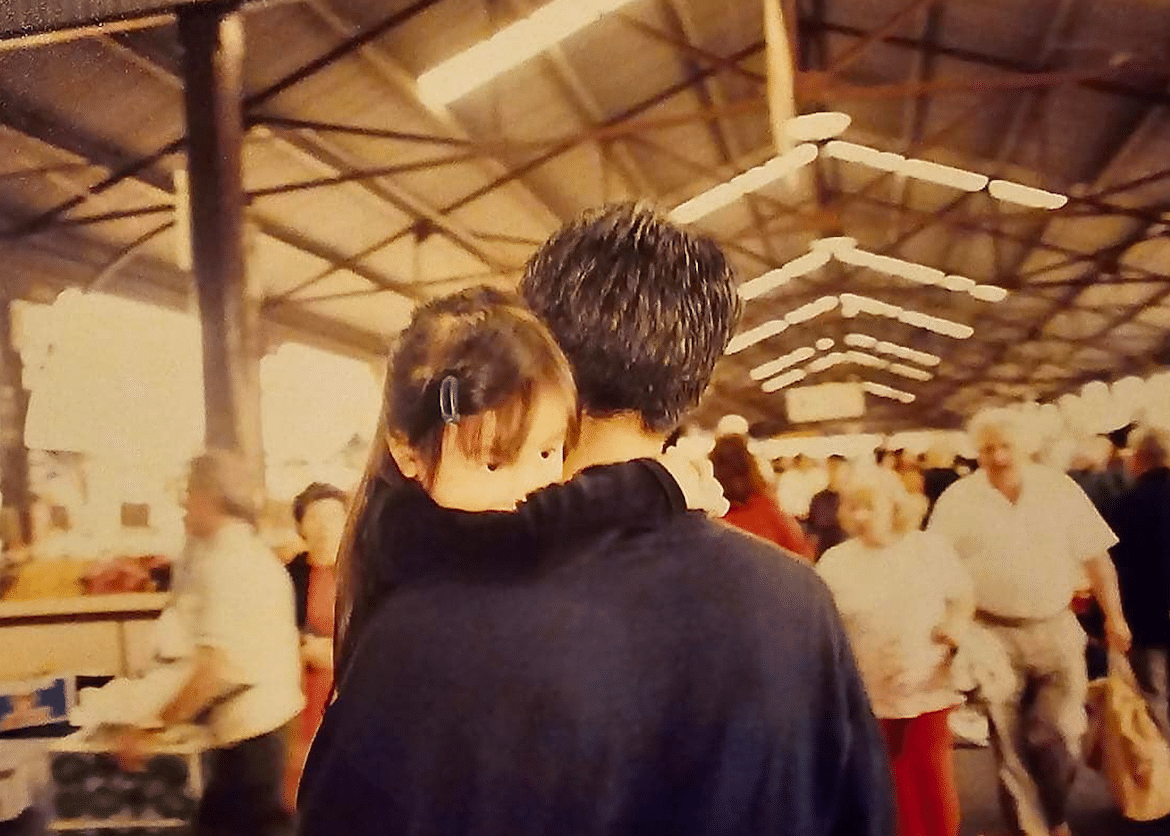6 tips for families with children dealing with gender confusion
by Christine Leow // February 21, 2022, 12:38 pm

Marriage and family therapist Dr Julie Hamilton provides clarity for families grappling with gender confusion. Photo by Jess Zoerb on Unsplash.
Your daughter cuts her hair short and asks to be called by a boy’s name. Your son wants a pair of sparkly pink ballet shoes. Your child tells you he has a crush on another boy.
What does it mean? How should you respond? What should you know before you speak to your kid?
These were some of the issues discussed at a webinar helmed by marriage and family therapist Dr Julie Hamilton. Nearly 250 attended, half of them either parents or mental health professionals.
Dr Hamilton is a former Assistant Professor of Psychology who writes and speaks on topics related to understanding, preventing and responding to homosexuality and gender identity confusion.
The webinar was organised by family champion Jason Wong. Jason is a firm advocate of the strong father figure for stable families.
Gender confusion vs gender insecurity vs gender dysphoria
“Gender confusion happens when a child is confused about his gender identity,” explained Dr Hamilton.
“Some children feel insecure in their gender, not confident in their gender.”
“Historically, most children with gender dysphoria would outgrow the desire to be the opposite sex after puberty.”
Then, there are other children who are not only insecure about their gender identity, they have a “persistent feeling that they do not belong in their body, that they were meant to be the opposite sex”. This condition, said Dr Hamilton, is called gender dysphoria.
“Historically, most children with gender dysphoria would outgrow the desire to be the opposite sex after puberty, but would instead end up having same-sex attractions.
“A small percentage of children will continue to have discomfort with their biological sex past puberty.”
Gender insecurity and gender dysphoria may be pre-homosexual conditions, and for a smaller percentage of children, the desire to be the opposite sex may persist into adulthood.
Debunking gender confusion myths
Myth 1: Homosexuality is inborn. In addition, some people are born in the wrong bodies.
Fact 1: Researchers have never found a biological cause for homosexuality, nor have they found proof that people are born in the wrong body.
There is no research to support the belief that homosexuality is biologically determined, said Dr Hamilton. Nor is there any proof that people are born in the wrong body.
“When a child thinks he or she was born in the wrong body, it’s more a perception, and perceptions can be wrong.”
“All the twin studies conducted since the year 2000 reveal that when one identical twin identified as gay, less than 20% of the time the other identical twin also identified as gay.
“If homosexuality were biologically determined, there would be a much higher percentage of both identical twins identifying as gay.1
“Not only are same-sex attractions not biologically determined, these attractions are also typically not a choice.”
Instead, numerous developmental factors can contribute to same-sex attractions (SSA).
Added Dr Hamilton: “There is also no research to support the claim that children are born in the wrong body. When a child thinks he or she was born in the wrong body, it’s more a perception, and perceptions can be wrong.”
Myth 2: Change of same-sex attractions is not possible
Fact 2: Research reveals that change of identity, behaviour and even attractions are possible.
Change is possible to varying degrees, said Dr Hamilton.
This, she added, is borne from data collected from the last 100 years.2
Myth 3: You should embrace being the opposite sex because it is who you are since you may have been born into the wrong body.
Fact 3: There is no scientific evidence that people are born in the wrong bodies.
Gender dysphoria is a matter of perceptions – a child perceiving that he or she is in the wrong body.
It makes more sense to try to change a child’s perceptions than to try to change a child’s body.
In fact, according to KJ Zucker and S Bradley, intervention in childhood can be quite successful for alleviating gender confusion.3
“In these cases, gender identity disorder (GID) resolves fully and nothing in the children’s behaviour or fantasy suggests that gender identity issues remain problematic.”
“Gender transition has not been proven to be a positive or safe solution.”
Many may still have SSA but they would not want a sex change.
That is why Dr Hamilton is opposed to the position that some, like the American Academy of Pediatrics, have taken to change from a “watchful waiting” to a “gender affirming” stance.
With a gender affirming stance, children as young as three are encouraged to dress or identify as the opposite sex. By the age of 11, they may be prescribed puberty-blocking hormones. At age 16, they are given cross-sex hormones and, eventually, sex change surgery.
“Children change their minds. So, this is very concerning. Gender transition has not been proven to be a positive or safe solution.”
Myth 4: Surgery and hormonal treatment can align your body to your gender identity
Fact 4: A boy can never truly become a girl and vice versa
“It’s not possible to change a boy into a girl,” stated Dr Hamilton.
“It makes much more sense to address root causes and perceptions.”
This is because the male or female chromosomes are in the cells throughout the body.
Trying to change a child’s body to match his or her mind “presents dangerous side effects and complications” and will never truly accomplish the goal because it “fails to address underlying issues”.
“It makes much more sense to address root causes and perceptions in an attempt to change the mind to match the body.”
Tips to help families of children with gender confusion
1. Know the risk factors of gender confusion
Knowing the risk factors of gender confusion can help us prevent as well as understand it and, therefore, approach the issue of gender confusion with empathy.
The childhood risk factors include:
- Parents wanting a child of the opposite sex
- Sensitive temperament leading to interpretations of rejection or withdrawal
- Poor relationship with the same-sex parent
- Poor relationships with same-sex peers
- Over-identification with members of the opposite sex
- Parental reinforcement of cross-gender behaviours
- Sexual abuse
“Even if parents aren’t saying things (explicitly), a child can still pick it up,” said Dr Hamilton.
2. Help children develop their gender identity
How children establish their relationship with their parents and their peers can help them develop their gender identity healthily. Dr Hamilton explained the developmental theory of gender identity.
A child’s first attachment figure is the mother because it is the mother who carries the child in her womb and who is the source of food. So, she is the one the baby bonds with first.
At around the ages of one and a half to four, gender identification begins. In this phase, the child begins to bond with the parent of the same sex.
By age five up to 12, children begin school and look to same-sex peers to continue to learn what it means to be the gender that they are. They become more confident in themselves by bonding with those who are like them.
“Children who have a more sensitive temperament might perceive rejection where rejection is not really happening.”
By puberty, with a secure sense of their gender, they become curious about the opposite gender.
If, at any point in time, these attachment milestones are not reached – when their need to bond with the parent or peers of the same sex are not met – then gender confusion and, later, homosexual attractions may result.
“A boy may crave male connection and when that craving is not met, he feels insecure in himself as a male.
“By puberty this emotional need becomes sexualised where he now feels attracted to other boys.
Dr Hamilton added that the lack of connection may not be actual but may only be a perception the child has.
“The child does not perceive that the parent is available or wants a relationship and perceptions play a huge role.”
In the same way, girls who perceive being female as something negative because they see their mothers being mistreated might end up not wanting to be a woman. Those who cannot attach properly to their mothers might also seek out other women to fill the void, resulting in SSA.
Why such perceptions develop has to do with temperament.
“Children who have a more sensitive temperament might perceive things differently from what is really happening. For example, they might perceive rejection where rejection is not really happening.”
Genuine gender confusion will start very early, from as young as three.
Dr Hamilton went on to say that those who develop gender confusion are often sensitive, smart, articulate and observant.
“They are taking everything in but they are often taking in so much and maybe misunderstanding and misinterpreting the things that are happening because of their sensitivity.”
Genuine gender confusion will start very early, from as young as three. Those who say they are transgender when they are in their teens or early adulthood, but who did not experience gender dysphoria in childhood are usually girls and this experience is called rapid-onset gender dysphoria (ROGD).
ROGD is more often caused by social influence rather than mis-steps in bonding.
“These girls are surrounded by other girls who are saying they are transgender, or watching YouTube videos or reading the Internet and getting bombarded by messages that you can be whatever sex you want to be, you can change your gender.
“They are looking for their identity and trans identity is what they land on. With these kids, it is much more likely that they will change their minds later.”
Dr Hamilton said that this developmental theory of gender identity has been one that has been very applicable to the people with whom she has worked.
Many people who have come across this theory on her website have also agreed that the framework has been helpful in getting them to understand their gender confusion.
“I get feedback from all over the world saying, ‘This fits my story.’”
3. Have strong marriages and family relationships
Parents can prevent gender identity confusion by taking the following steps:
- Create a marriage that is healthy and loving.
- Model healthy masculinity and femininity.
- Embrace the biological sex of each child.
- Relate to each child as the boy or girl that they are, not as a neutered being.
- Steer your child towards hobbies and interests that will best equip them for same-sex peer acceptance and bonding.
- Protect children from destructive influences and experiences.
4. Know the root causes of gender confusion
Whatever therapeutic modality is used, understanding and addressing the root factors of gender confusion is the key to dealing with it.
Some root issues include problems with identity or how they see themselves in the family and with their peers, traumas, misperceptions, relational breakdowns and problems relating with same-sex peers.
The basic issues to explore include:
- Do the parents model a healthy and loving marriage?
- How close is the child to each parent?
- Do the parents embrace the biological sex of their child?
- Do the parents relate to each child as the boy or girl that they are, or do they relate to their child as a neutered being?
- What type of structure is provided by the parents?
- Is the child protected from destructive influences and experiences?
- How does the child see himself or herself?
- Does the child have a healthy understanding of masculinity and femininity?
- Does the child have misperceptions of what it means to be male or female?
- Can the child relate to same-sex peers effectively?
- Do they have similar interests, hobbies and skills?
- Do they feel inferior to members of the same sex or on par?
“My approach is client-directed in that I try to help the client or client-family address their goals. I do not impose an agenda.
“I also seek to use the strengths, resources and ideas that clients bring into the sessions.
“In addition, I want to be sure the emotional needs of the child are being met and strive to address any possible deficits, including misperceptions of the child.”
By taking away therapy, they are “taking away the idea that anyone should want to change”.
Therapy should be voluntary, added Dr Hamilton.
“Conversion therapy is a misused term, only used by activists. It is the idea that people are doing harm and imposing change on people who don’t want change.”
Those who ban conversion therapy do so in the belief that therapy causes suicide. The truth is that those who were suicidal were suicidal before therapy and less suicidal after therapy.
By taking away therapy, they are “taking away the idea that anyone should want to change or pursue change.”
5. Parents need to connect and direct
Parenting includes connecting (having a relationship, being nurturing, conveying love and acceptance) as well as directing (providing structure, boundaries and teaching).
Connecting has four aspects:
a. Time
Time spent with the children needs to be unhurried, undivided and ongoing.
b. Emotional nurture
This involves establishing eye contact, showing physical affection and affirming the children that they are precious and created in God’s image.
c. Listening to understand
This means taking the time to hear the children’s heart instead of merely giving instructions.
d. Empathy
Join with the children emotionally and validate their feelings.
The connecting needs to be firmly in place for the directing to be effective.
The five aspects of directing are:
a. Role-modelling
For parents to live by example, they need to be emotionally and spiritually healthy themselves and have healthy marriages.
b. Teaching
Children need to be taught the importance of obedience and respect for authority. They also need to be taught social skills so they can relate to same-sex peers.
Said Dr Hamilton: “They need to be taught all they need to know for life. Don’t assume they know it if you haven’t taught them.”
c. Establishing rules and boundaries
Children need structure. The rules need to be clearly explained, fair and reasonable.
d. Providing consequences
In the same way, consequences should be fair, predictable and effective. They also need to be given in love, not in anger.
e. Protecting from harmful input
Friends, culture and technology can influence our children. “Watch out for wrong messages and guard your children from damaging input.”
6. Clear misconceptions in the child
This includes the child’s perception of his or her family, self and relationship with peers. Help the child see himself or herself more accurately, identifying their strengths, helping them to be more comfortable and confident in their own skin.
If they have perceived rejection, demonstrate love and acceptance and seek to address any misunderstandings.
“God can bring good from bad”
Encouraging parents in the webinar, Dr Hamilton said: “If you did wrong, repent and forgive yourself.
“God can bring good from bad even if we mess up.”
Moving forward, parents need to:
1. Listen
Start with questions to understand them: “How long have you felt this way? How did you come to this conclusion?”
Be curious not condescending. Then, listen.
2. Validate
Tell them: “I’m so glad you are honest with me. It’s hard but I’m glad you shared with me. I’m so sorry you feel this way.”
Avoid burdening your child with your emotions.
“(This is) so that they don’t feel that they have to support you because you are broken-hearted,” said Dr Hamilton.
3. Share truth
Clearly convey to them that you love them unconditionally and that nothing will change your love for them. Only when you have listened and validated can you gently share the truth with them.
“Share information with them that they will not get out there. Tell them they have options for pursuing help if they want it.”
References
1. Whitehead, NE (2011). “Neither Genes nor Choice: Same-Sex Attraction Is Mostly a Unique Reaction to Environmental Factors.” Journal of Human Sexuality, 3:81-114.
2. Phelan, JE, Whitehead, NE, & Sutton, PM (2009). “What Research Shows: NARTH’s Response to the APA Claims on Homosexuality. A Report of the Scientific Advisory Committee of the National Association for Research and Therapy of Homosexuality.” Journal of Human Sexuality, 1:1-94.
3. Zucker, KJ (2005). “Gender Identity Disorder in Children and Adolescents.” Annual Review of Clinical Psychology Vol 1, 467-492.
RELATED STORIES:
How can the church respond better to those with same-sex attraction?
We are an independent, non-profit organisation that relies on the generosity of our readers, such as yourself, to continue serving the kingdom. Every dollar donated goes directly back into our editorial coverage.
Would you consider partnering with us in our kingdom work by supporting us financially, either as a one-off donation, or a recurring pledge?
Support Salt&Light



